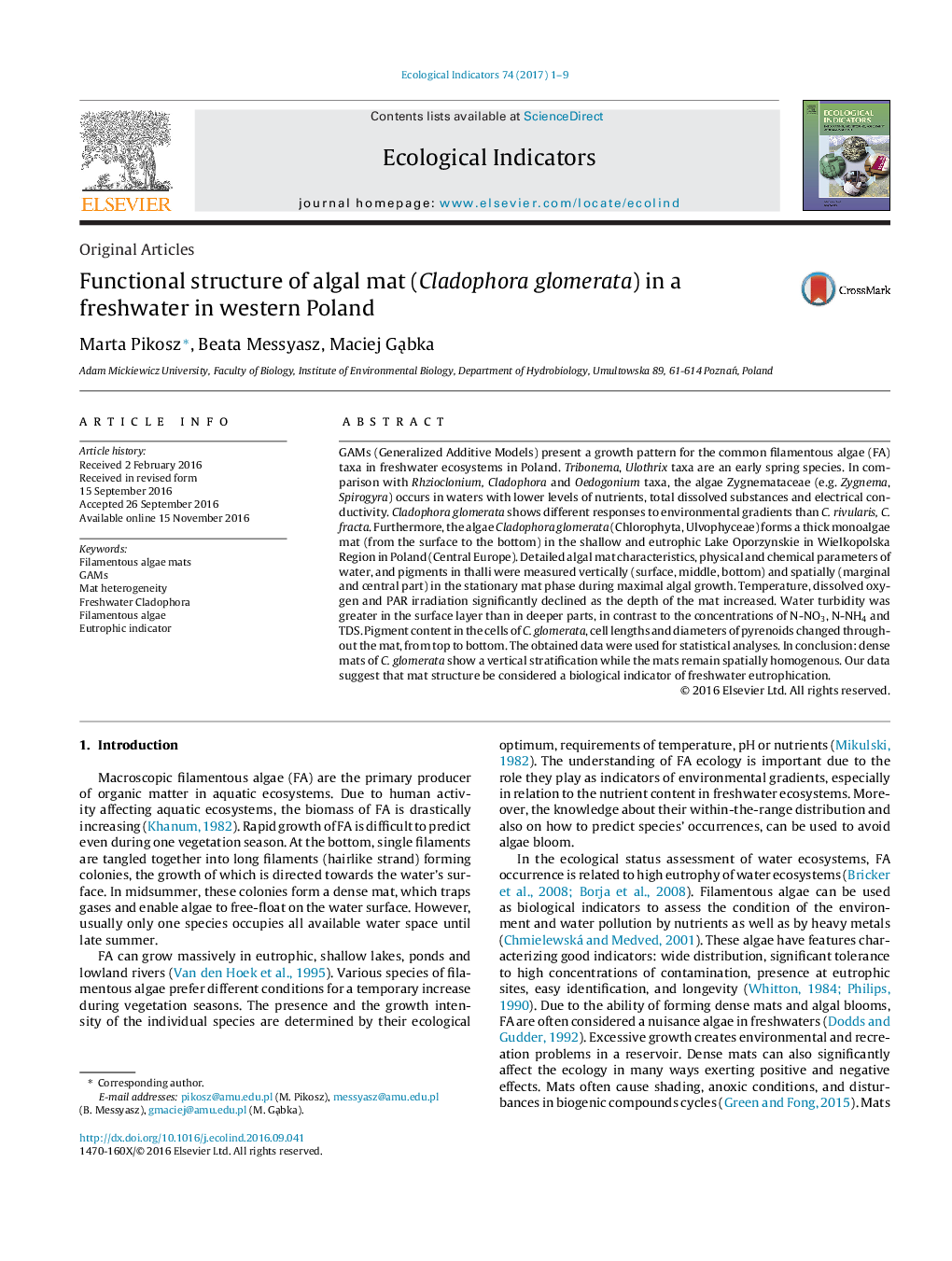| Article ID | Journal | Published Year | Pages | File Type |
|---|---|---|---|---|
| 5741829 | Ecological Indicators | 2017 | 9 Pages |
â¢GAMs were applied to freshwater filamentous algae.â¢The role of Cladophora glomerata mats in a shallow lake was indicated.â¢Vertical and spatial profiles of FA mats were distinguished.â¢Massive development of C. glomerata is the most efficient eutrophic indicator.
GAMs (Generalized Additive Models) present a growth pattern for the common filamentous algae (FA) taxa in freshwater ecosystems in Poland. Tribonema, Ulothrix taxa are an early spring species. In comparison with Rhzioclonium, Cladophora and Oedogonium taxa, the algae Zygnemataceae (e.g. Zygnema, Spirogyra) occurs in waters with lower levels of nutrients, total dissolved substances and electrical conductivity. Cladophora glomerata shows different responses to environmental gradients than C. rivularis, C. fracta. Furthermore, the algae Cladophora glomerata (Chlorophyta, Ulvophyceae) forms a thick monoalgae mat (from the surface to the bottom) in the shallow and eutrophic Lake Oporzynskie in Wielkopolska Region in Poland (Central Europe). Detailed algal mat characteristics, physical and chemical parameters of water, and pigments in thalli were measured vertically (surface, middle, bottom) and spatially (marginal and central part) in the stationary mat phase during maximal algal growth. Temperature, dissolved oxygen and PAR irradiation significantly declined as the depth of the mat increased. Water turbidity was greater in the surface layer than in deeper parts, in contrast to the concentrations of N-NO3, N-NH4 and TDS. Pigment content in the cells of C. glomerata, cell lengths and diameters of pyrenoids changed throughout the mat, from top to bottom. The obtained data were used for statistical analyses. In conclusion: dense mats of C. glomerata show a vertical stratification while the mats remain spatially homogenous. Our data suggest that mat structure be considered a biological indicator of freshwater eutrophication.
